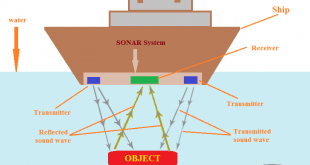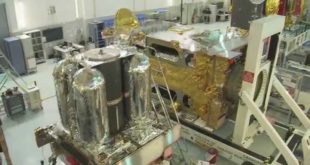Spider silk is also known as gossamer. It is a sought-after biomaterial. Spider silk is a protein fiber made in the glands of a spider. This silk is flexible and lightweight. These fibers are waterproof and have a tensile strength similar to that of steel. These fibers can be stretched …
Read More »New Piezoelectric materials enable Smart sensors, Actuators and Sonar Systems breakthroughs
A transducer is any device used to convert energy from one form to another, such as a conversion from mechanical to electrical energy or vice versa. An electroacoustic transducer is a device that converts acoustic energy (sound) into electrical energy (voltage or current) or vice versa. Piezoelectric materials modify …
Read More »Self-healing materials for automatic repair of smartphones, soft actuators and robots to spacecrafts
Generally, materials will degrade over time due to fatigue, environmental conditions, or damage incurred during operation. Repair of certain materials during their lifecycle (especially those with structural functions such as concrete) can be very expensive and labour intensive. Therefore Scientists began developing self-healing materials , those artificial (synthetic) substances that …
Read More »New Satellite test facilities required due to large Commercial and Military thrust on Microsatellites and Nanosatellites
As of May 2021, there are about 4,300 active artificial satellites currently orbit Earth. We rely so much on satellites for so many things in our lives, and we count on them to be durable and reliable. When satellites don’t work properly, they can severely impact our lives. That’s why …
Read More »China’s Military-Civil Fusion strategy boosting its technological and Military Innovation and Defence preparedness
China is making rapid advancements in many technologies thus narrowing its gap with the western world. Former US energy secretary Steven Chu has even observed that China is ahead of America in areas ranging “from wind power to nuclear reactors to high-speed rail”. China is also catching up fast in …
Read More »Gallium Nitride technology enabling IoT revolution, Cellular 5G , Optoelectronics and sensors
Integrated circuits and power devices utilized by the semiconductor industry for the production of advanced computers, consumer electronics, communication networks, and industrial and military systems have been almost exclusively based on silicon technology. The requirements of future electronics place a great emphasis on achieving new devices with greater power density …
Read More »Israeli arms industry uses Gaza strip as their testing laboratory for new weapons development and to sell them as battle proven weapons
An outbreak of violence in the ongoing Israeli–Palestinian conflict commenced on 10 May 2021, though disturbances took place earlier, and continued until a ceasefire came into effect on 21 May. It was marked by protests and rioting, police riot control, rocket attacks on Israel by Hamas and Palestinian Islamic Jihad, …
Read More »US Aerospace industrial base Challenges and Way ahead
The U.S. Aerospace & Defense (A&D) industry is the world leader in the design, development and manufacture of technologically advanced aircraft, space systems and defense capabilities. Since the Wright Brothers’ first powered flight in 1903, the aerospace industry has grown by leaps and bounds and produced iconic achievements such as …
Read More »‘Space-as-a-service’, ‘Satellite-as-a-service’ and ‘Space Data as a Service’ are new buisness models of Space Industry
The modern space industry is witnessing exponential growth in small satellite and nanosatellite areas. Nanosatellite and microsatellite refer to miniaturized satellites in terms of size and weight, in the range of 1-10 Kg and 10-100 kg, respectively. ‘CubeSat’ is one of the most popular types of miniaturized satellites. These are …
Read More »Blockchain disrupting Industries from healthcare, IoT to Cybersecurity
Bitcoin and other virtual currencies are made possible by what’s known as blockchain technology. Blockchain technology is a digital ledger that consists of distributed, decentralized and often-times public data capable of automatically recording and verifying a high volume of digital transactions, regardless of location. A blockchain is a type …
Read More » International Defense Security & Technology Your trusted Source for News, Research and Analysis
International Defense Security & Technology Your trusted Source for News, Research and Analysis









